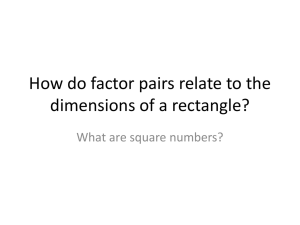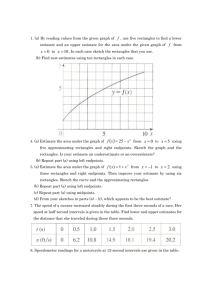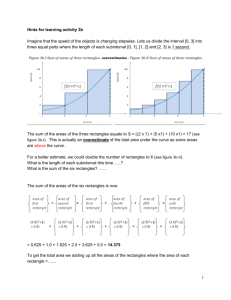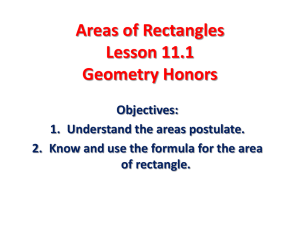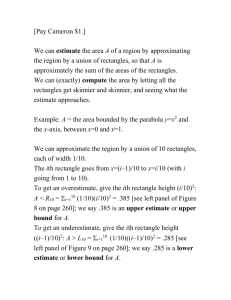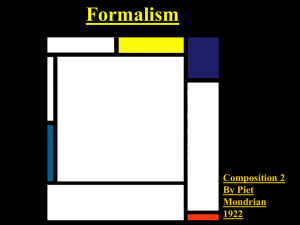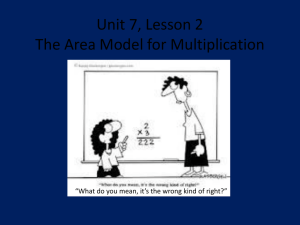Random Rectangles Activity
advertisement
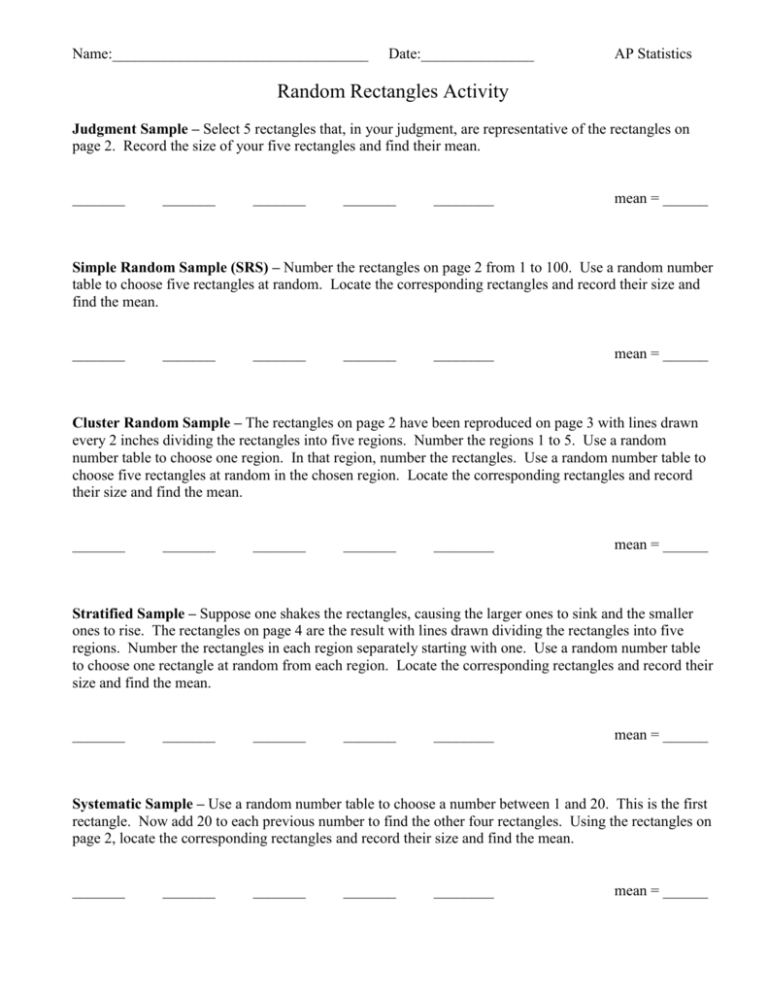
Name:__________________________________ Date:_______________ AP Statistics Random Rectangles Activity Judgment Sample – Select 5 rectangles that, in your judgment, are representative of the rectangles on page 2. Record the size of your five rectangles and find their mean. _______ _______ _______ _______ ________ mean = ______ Simple Random Sample (SRS) – Number the rectangles on page 2 from 1 to 100. Use a random number table to choose five rectangles at random. Locate the corresponding rectangles and record their size and find the mean. _______ _______ _______ _______ ________ mean = ______ Cluster Random Sample – The rectangles on page 2 have been reproduced on page 3 with lines drawn every 2 inches dividing the rectangles into five regions. Number the regions 1 to 5. Use a random number table to choose one region. In that region, number the rectangles. Use a random number table to choose five rectangles at random in the chosen region. Locate the corresponding rectangles and record their size and find the mean. _______ _______ _______ _______ ________ mean = ______ Stratified Sample – Suppose one shakes the rectangles, causing the larger ones to sink and the smaller ones to rise. The rectangles on page 4 are the result with lines drawn dividing the rectangles into five regions. Number the rectangles in each region separately starting with one. Use a random number table to choose one rectangle at random from each region. Locate the corresponding rectangles and record their size and find the mean. _______ _______ _______ _______ ________ mean = ______ Systematic Sample – Use a random number table to choose a number between 1 and 20. This is the first rectangle. Now add 20 to each previous number to find the other four rectangles. Using the rectangles on page 2, locate the corresponding rectangles and record their size and find the mean. _______ _______ _______ _______ ________ mean = ______ Random Rectangles pg.2 Random Rectangles pg.3 Random Rectangles pg.4 Analysis/Discussion: Simple Random Sample: Description of Method: Advantages: Disadvantages: Cluster Random Sample: Description of Method: Advantages: Disadvantages: Stratified Sample: Description of Method: Advantages: Disadvantages: Systematic Sample: Description of Method: Advantages: Disadvantages:
